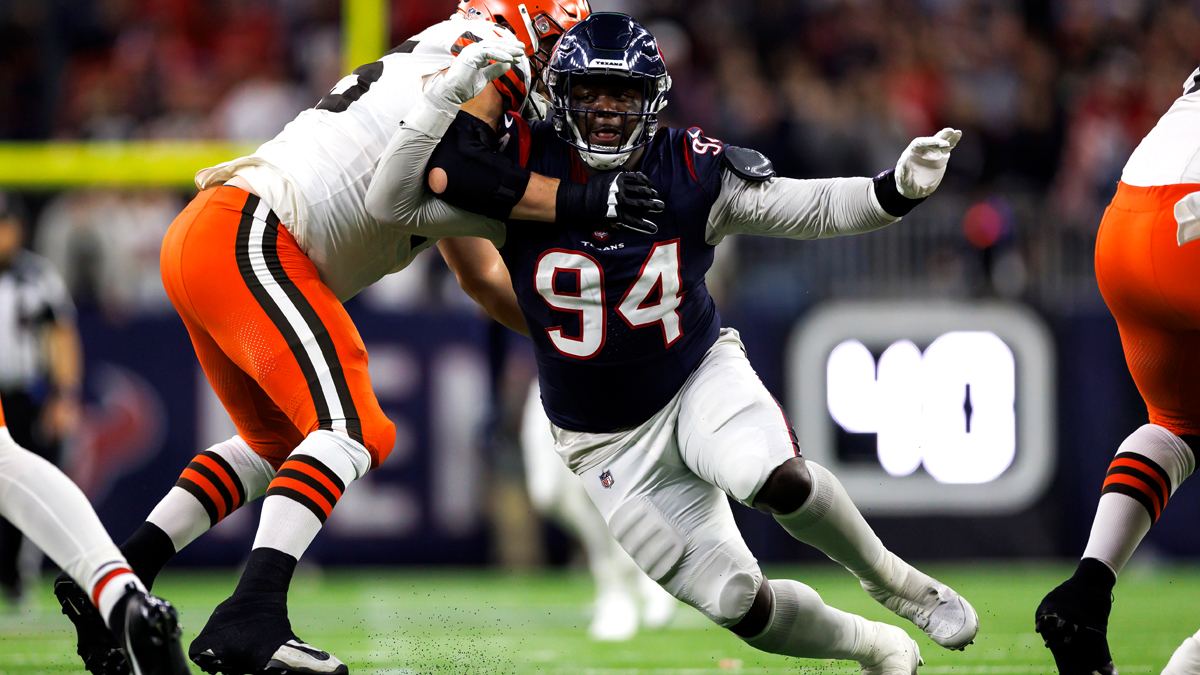SANTA CLARA — The 49ers did not draft an offensive lineman until the third round of the 2024 NFL Draft, and run-game coordinator Chris Foerster agrees with the philosophy.
While public opinion might be that San Francisco should have taken advantage of the offensive linemen depth in the draft, Foerster, who also serves as the offensive line coach, believes in the earliest rounds of the draft, teams should select players who will have a bigger effect on the game.
“This is my personal opinion,” Foerster said Wednesday at 49ers OTAs. “If they ask me, invest in guys that touch the ball, guys that can touch the ball and score touchdowns. And then there's a range of guys, second, third, fourth round, fifth round even, that we will find starting offensive linemen in.”
Stay in the game with the latest updates on your beloved Bay Area and California sports teams! Sign up here for our All Access Daily newsletter.
The 49ers' entire starting lineup of offensive linemen from 2023 are set to return, including All-Pro Trent Williams, Aaron Banks, Jake Brendel, Jon Feliciano and Colton McKivitz. Foerster believes only players that would be considered franchise-type players like Williams should be taken in the early portion of the first round.
“Yeah, you draft Trent Williams,” Foerster said. “You pick a draft where you're getting a difference maker. But there's guys that can make a difference, that touch the ball, well into the second, third, fourth rounds, or second and third rounds, at least. And definitely in the first round. That guy that touches the ball, it makes a huge difference in the game.”
Historically, Foerster is right. Over the past several seasons, the 49ers have not had the best success rate on offensive linemen in the first two rounds. While some have played successfully and many remain in the NFL, a skill player taken at the same spot might have made a bigger impact on the game.
Here's a list of offensive linemen drafted by the 49ers in the first two rounds over the past two decades:
San Francisco 49ers
2021 - OL Aaron Banks (Second round, No. 48)
2018 - T Mike McGlinchey (First round, No. 9)
2016 - G Joshua Garnett (First round, No. 28)
2010 - T Anthony Davis (First round, No. 11)
2010 - G Mike Iupati (First round, No. 17)
2008 - G Chilo Rachal (Second round, No. 39)
2007 - T Joe Staley (First round, No. 28)
2005 - G David Baas (Second round, No. 33)
2004 - G Justin Smiley (Second round, No. 46)
“I want the guy that touches the ball, for me,” Foerster said. “Because I think we can develop those players much more readily and have developed those players through the times, because we do have specific things that we're looking for.
“We know what we're looking for through the course of time. That's the advantage of being together with Kyle for so long that we kind of can pigeonhole these guys. Are we always right? Heck no, we're not always right and nobody is on anything.”
Foerster does admit there is a limit to how low a team can go while still maintaining the integrity of the offensive line. But the long-time coach believes it is unnecessary to put five first-round picks across the line of scrimmage.
“Now, there's a line,” Foerster said. “This is what I always say with offensive line play -- there's a line below which that, with offensive line play, that if you just drop a little bit below it, it’s a gaping hole. All of a sudden, you're like, ‘He can't block anybody.’ And now we got a major problem. But as long as they're at that line and just above it, you can survive it and you can take care of them.”
One reason the 49ers can get away with lesser-known names on the offensive line is Foerster’s own coaching ability and knowledge of how coach Kyle Shanahan’s system works. With a skilled quarterback like Brock Purdy, who has targets such as Deebo Samuel, Brandon Aiyuk, Christian McCaffrey and George Kittle, the line isn’t necessarily required to do as much.
“The fact that you can throw a short pass to Deebo, even though the right tackle's getting beat, it ends up being a 60-yard touchdown,” Foerster explained. “So yeah, the right tackle blocks somebody, but if the guy gets tackled at five yards, you don't have the 60-yard touchdown. ‘Boy that right tackle did a great job.’ What's it matter if the guy touching the ball can't take it to the house? So, there's the trade off, and you're constantly playing that game.”
This is not to say Foerster believes that his ability to coach outweighs a player’s talent, but more how the offensive line works in conjunction with the skill players on the offense. As long as all of the pieces are working together, they have the potential for success. Three recent trips to the NFC Championship Game and two Super Bowl appearances back up his theory.
Download and follow the 49ers Talk Podcast


